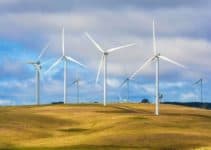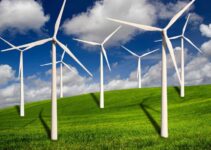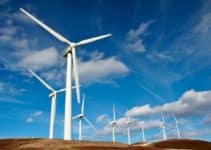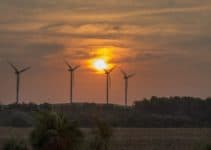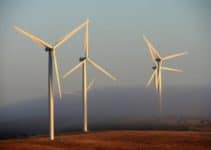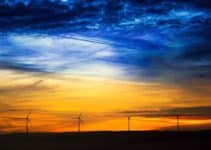Up until recently, people still only had visual impressions of what a windmill is, often associating it with the past and particularly before the industrial revolution. Today, things have come full circle, if you will and there is now a growing demand for large, technologically advanced windmills across the world. The term wind energy or wind power describe the process through which wind turbines convert the kinetic energy in the wind into electrical energy by the use of generator.
What this introductory guide seeks to do is describe the apparatus in layman’s terms and also outline how they work and what they were intended for originally and the purposes for which they are used today. We begin with a brief definition of what a windmill is.
- It was originally a structure with sails, much like that on pre-industrial ships, and was originally used to produce flour from corn. In order to do this, the wind would have to prompt the sails to turn. They were also originally built by master craftsmen.
- A dictionary definition explains it thus; it is a machine which is propelled by the wind from a horizontal shaft which extended onto sails. Windmills still used today, mainly in parts of the world which have traditionally relied on them, are powered by electricity or water.
- The dictionary expounds this definition further by relating it to a human physical exercise technique which replicates the symbolism and movement of the original windmill. It is also famously symbolic in Cervantes’ classic of Don Quixote. This definition reminds readers that the original mill was also used to pump water and generate power.
- In modern terms, the advanced windmill operates with just three blades mainly to generate sustainable sources of electricity and energy. Today, these windmills are also referred to as wind turbines.
- According to Wikipedia, “A windmill is a mill that converts the energy of wind into rotational energy by means of vanes called sails or blades.”
More from Wind energy:
- How to build your own wind generator
- 35 Facts about wind energy
- What is a wind turbine
- Pros and cons of wind energy
- Vertical axis wind turbines
Fixed speed windmills run at one speed no matter what the speed of wind is and use gearbox (gearbox has gears which convert the slow speed of the spinning blades into higher-speed rotary motion) to generate electricity at the right frequency for the grid whereas variable speed windmills speed up and down as the wind speeds up and down
How Does a Windmill Work?
Winds are produced due to uneven heating of the atmosphere by the sun, the rotation of the earth and the irregularities of the earth’s surface. Wind flow patterns differ from place to place and are modified by bodies of water, vegetation, and differences in terrain. This next section explains briefly but accurately how windmills work. Sourcing more extensive information, readers will learn that understanding technical processes initiated in wind turbines will be easy to follow because the manner in which windmills work follows a simple process. Here we continue to rely on layman’s terms.
- A number of different options were tried when modern wind turbines were first built. Today, the universal mechanizing principle is to operate the turbine by using just three blades placed around a rotor which is connected to a shaft. Note that number of variations have been tried, two blade and even one blade. But, three blades works the best.
- As its name states, the windmill’s only source of energy is derived from the wind. The wind turns the blades which spins a shaft, in turn, prompt a generator to produce electricity. These blades are connected to a generator, sometimes through a gearbox and sometimes directly. In both the cases, the generator converts the mechanical energy into electrical energy. Interestingly, most modern turbines turn in a clockwise direction. Depending on wind speed, most modern turbines can operate at speeds from as little as four meters per second to as much as 15 mps.
- Quite a number of green energy advocates and NGO’s describe the wind-generator process more succinctly by correlating it closely with the environmental sustainability initiatives.
- Once the turbine’s blades turns a shaft located inside of a box placed on top of the turbine, gearbox mode is propelled and more speed rotation is given off. A transformer within the turbine then converts electricity into a voltage suitable for distribution to a national grid.
Main Purpose of Modern Wind Turbine
By now, most readers will know that modern windmills (turbines) primary purpose is to produce electricity from wind with as little impact on the environment as possible. These next few notes simply highlight this sustainable initiative. The minimal impact on the environment is, however, controversial. We’ll mention this briefly too.
- Whether located in rural or urban sectors, it is often people on the lowest level of the socio-economic scale that are faced with looking at these hegemonic structures every day. Also, nature lovers continue to voice legitimate concerns on how these turbines impact migratory patterns of bird species.
- Already mentioned, the basic function of a wind turbine is to utilize the power generated from wind and convert it into usable (renewable) energy. On a smaller scale, home users can install their own turbine and produce their own power at little or no cost.
- As renewable energy, it can be reproduced continuously until there is enough power to feed its designated locations. It is also promoted as a clean source of energy and while not yet widely used, it is ideal for the world’s least developed nations as an affordable source of producing electricity.
- Most importantly, the turbine contributes greatly to reduce fossil fuel consumption. It goes without saying that the more countries that use them, the greater the reduction in fossil fuel use because it has been proven to be a reliable driver of energy.
The Iconic Dutch Windmill
Earlier, we made reference to the windmill being part of a nation’s traditional method of generating power. Most people today will still associate the windmill as a Dutch symbol and recognize it as part of that province’s rich history and cultural heritage.
Peculiarly, when we talk about the Dutch, we locate them to Holland, a federal province of European Union Member, the Netherlands. Here are just a few brief interesting facts about the Dutch windmill.
- As a landmark icon of Holland, there are more than a thousand windmills located across the province.
- The first windmill was built around the middle of the eighteenth century in response to the need to drain the Kinderdijk polder and surrounding polders. Situated on land below sea level, the Netherlands is one of the most vulnerable countries where rising sea levels are concerned.
- Throughout Dutch history, windmills have been used for many different purposes, but the best known remains the intricate process of pumping water from the lowlands and into nearby rivers.
Main Components of a Windmill
To help understand how the modern wind turbine works we can also take a look at some of its main components and what they are used for. Here are just a few features of the wind turbine.
- Blades – We should mention this apparatus once more because it is the most recognizable and most important feature of the wind turbine. Another function of the blade worth mentioning is that it control’s rotor speed to prevent it from turning in winds that are either too high or low.
- Rotor – To follow on from the first point here, this is the technical term for the entire hub. It is also known as a propeller.
- Anemometer – This important feature measures wind speed and transfers the recorded data to a controller.
- Tower – This is another recognizable feature of the wind turbine. The towers of today’s turbines are made from steel and concrete.
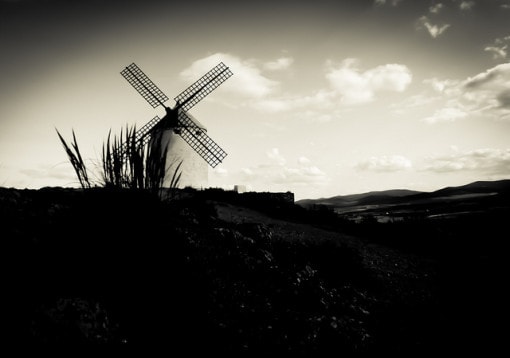
Positive Effects of the Wind Turbine
Finally, it is incumbent to emphasize the importance of wind turbines where environmental sustainability is concerned and as a rapid but highly effective response to global warming and climate change.
The exponential benefits are not only crucial but already evident where wind turbines are used increasingly, mainly in developed and developing nations. To finish this guide on windmills and its natural successors, wind turbines, we highlight some positive effects they have on humankind and the environment.
- No more greenhouse gases – Turbines do not emit carbon dioxide.
- Power is free – No government agency can presently regulate wind. So they cannot charge fees to those who choose to use it as an alternative source of life-sustaining and life-saving energy.
- Versatility – There is a perception in some areas that the only modern day wind turbines you are likely to see are giant monstrosities hovering over your home. Not the case, because smaller wind turbines, small enough and perfectly equipped, are being manufactured for you today. All you need do is talk to the farmers who are already utilizing customized turbines for their own agricultural needs.
Positively speaking, this may have been a whirl-wind tour of processes, purposes, features and just causes along with some historical anecdotes on ancient windmills and the modern day equivalent of the wind turbine. The main purpose here was also to stimulate increased awareness and interest in this important piece of humankind’s legacy for the future.

